In a state known for its stunning landscapes and friendly communities, many families in Utah are faced with a challenging and emotional task: finding the right care for their elderly loved ones. The process can be daunting, filled with tough decisions and overwhelming options. But you don’t have to navigate it alone. Utah Senior Care Advisors offer expertise that not only simplifies this journey but also helps families focus on what truly matters—the well-being of their loved ones. With tailored support and a deep understanding of senior needs, these professionals serve as guides through the complexities of elder care, empowering families to make informed choices with confidence.
Utah senior care advisors provide personalized guidance and support to seniors and their families in navigating various long-term care options, including assisted living facilities, nursing homes, and home care services. They assess individual needs, facilitate tours of potential facilities, and assist with the decision-making process to ensure seniors receive the appropriate level of care tailored to their preferences and requirements.
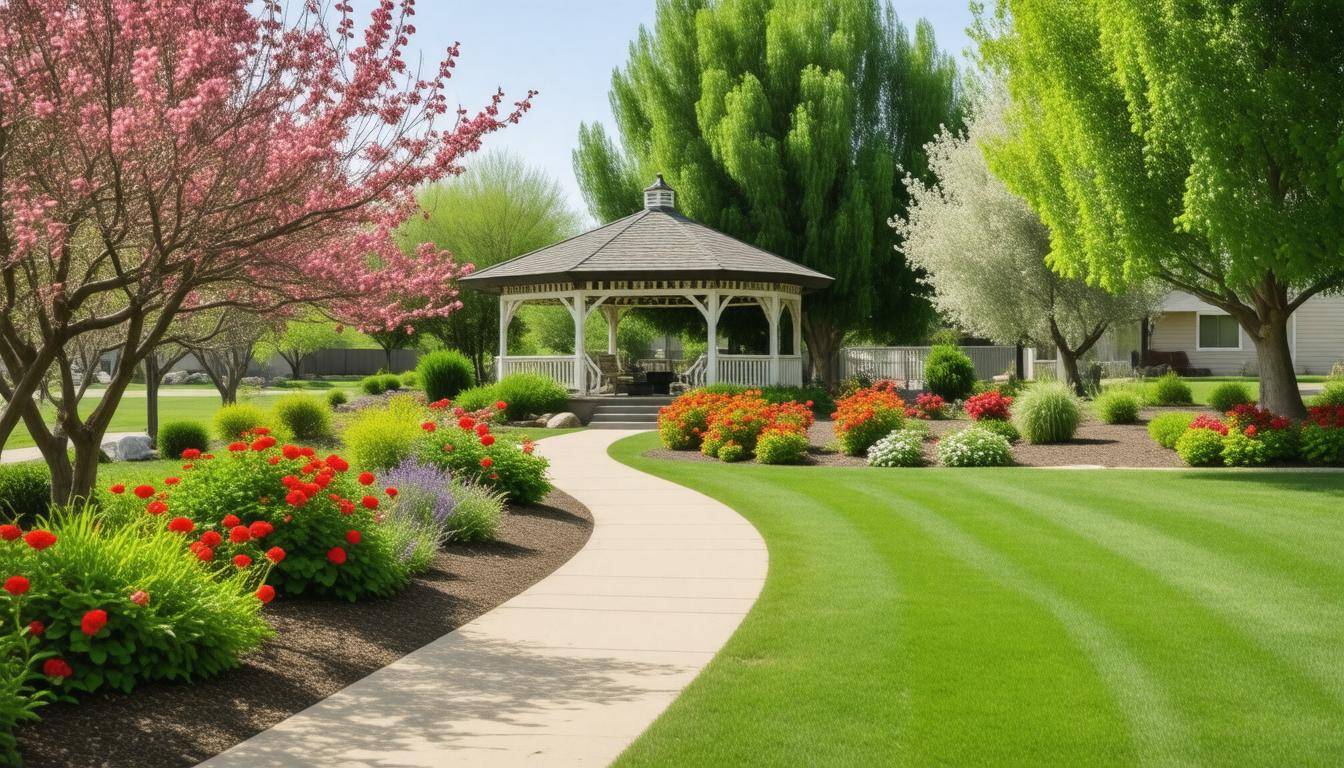
Utah Senior Care Advisors specialize in forming comprehensive care packages that ease the sometimes overwhelming journey of finding appropriate support for elderly family members. Among their standout offerings is the creation of Personalized Care Plans. This begins with an in-depth consultation where advisors listen carefully to both seniors and their families. They review important details like medical histories, current health conditions, and personal preferences.
This meticulous attention to detail allows them to design tailored care plans that meet each individual's unique needs, ensuring that seniors receive not just any care but the right kind that fits them best.
Once a personalized plan is created, an essential step often follows: Assisted Living Placement. Advisors assist families in locating suitable assisted living facilities matching their loved one’s requirements. Whether seeking specialized memory care for dementia or Alzheimer’s patients, or simply a community closer to home, the goal is to ensure seniors transition smoothly into environments where they feel comfortable and well-supported.
This quality of service bolsters confidence in families facing difficult choices about relocation while promoting independence for their loved ones.
The role of these advisors doesn't stop at placements; they also explore the financial aspects of senior care. Their Financial Planning service offers invaluable guidance as families navigate the often-complex costs associated with various care options. They help demystify funding sources such as Medicaid, veterans' benefits, and long-term care insurance while guiding families through eligibility assessments and application processes.
Many families have reported reductions in out-of-pocket expenses thanks to insightful advice from their advisors. One family highlighted how their advisor helped them secure additional benefits, which made a significant difference in their overall financial situation.
Financial security is just as crucial as physical health when it comes to elder care, and that's why understanding available resources can transform a family's experience.
The thorough approach taken by Utah Senior Care Advisors encompasses all aspects of elderly support, assuring families that they are receiving comprehensive assistance. This commitment ultimately fosters a smooth transition into the next area of focus: exploring vital information regarding various retirement options available for seniors.
When it comes to navigating the complex landscape of retirement facilities, guidance from experienced advisors can be invaluable. Understanding the wide array of options available helps families make informed decisions that prioritize the well-being of their loved ones.
As you begin your search, focus on evaluating the specific needs of your family member alongside what each facility offers. This personalized approach ensures that you choose a place that resonates with their lifestyle and care requirements.
Start by assessing amenities and services that align with your loved one's preferences and necessities. For some seniors, having access to on-site medical care may be essential, especially if they have chronic conditions or require regular medications. Other individuals might prioritize recreational activities that foster socialization and engagement, such as fitness classes or art workshops. Dining options also play a significant role; nutritious meals tailored to dietary needs can enhance overall wellness.
A comprehensive evaluation involves visiting prospective facilities in person whenever possible. This allows families to get a true sense of the environment—observing cleanliness, amenities in action, and even interacting with staff members.
Don’t shy away from asking questions that can reveal important insights: Inquire about safety measures, staffing ratios, and activity schedules.
Tip: Pay special attention to how staff interacts with residents. Genuine warmth and attentive responses can indicate high-quality care.
The table provided summarizes various retirement communities in Utah, showcasing how they differ in offerings and costs:
| Facility | Key Amenities | Average Cost per Month |
|---|---|---|
| Sunshine Retirement Home | On-site medical care, swimming pool, library | $3,000 |
| Happy Living Community | Dementia care, fitness center, arts and crafts | $3,500 |
| Peaceful Meadows | 24-hour nursing, transportation, meal plans | $4,000 |
With these comparisons in hand, you can explore deeper into each option while considering not only the amenities but also the overall atmosphere and community feel. Personal visits will help assess whether a facility feels like home for your loved one.

Senior care advisors are essential navigators in the often complex world of elderly support, and their expertise is grounded in a solid foundation of training and experience. Their specialized knowledge does not just set them apart; it empowers families to make informed decisions about the care of their loved ones. Whether it’s understanding the nuances of dementia care or recognizing signs of elder abuse, these professionals are trained to spot issues that might otherwise go unnoticed.
Senior care advisors typically undergo rigorous training in fields such as gerontology, social work, or nursing to ensure they're equipped with the skills necessary for this vital work. In fact, 85% of care advisors in Utah hold specialized certifications, according to the Utah Senior Care Association, significantly surpassing the national average. This higher qualification level indicates a commitment to excellence in elder care.
With such specialized backgrounds, these advisors bring valuable knowledge that extends beyond what one might find in standard caregiving experiences.
But learning doesn’t stop at formal education. Advisors engage in ongoing education programs to stay abreast of healthcare regulations, new therapies, and emerging best practices. This continuous pursuit of knowledge is crucial because healthcare is an ever-evolving field; what was considered best practice five years ago may no longer hold true today. For instance, families who consulted with advisors recently learned about breakthrough Alzheimer’s treatments that could dramatically improve their loved ones’ quality of life. One family shared a heartfelt story about how their advisor's timely recommendations made all the difference during a challenging episode.
"Our advisor knew about these new treatments before we even heard they existed," one family noted, highlighting how critical up-to-date knowledge can be for those navigating uncertain paths with their elders.
When families are faced with tough choices about elderly care, having access to an expert who is well-versed in both established and emerging methodologies makes all the difference.
As senior care advisors continue to enrich their expertise and acquire important certifications, they forge trusting relationships with families seeking guidance during vulnerable times. They do not just serve the needs of individual seniors but also foster peace of mind for entire families coping with the complexities of aging loved ones—ensuring that each transition is met with understanding, compassion, and precision tailored to each situation.
Equipped with this level of knowledge and support, families can navigate the decision-making process more comfortably, leading them into new discussions surrounding essential choices for their loved ones.

The emotional weight accompanying decisions about senior care can be immense. Families frequently experience anxiety when considering how to provide for their aging loved ones. A skilled advisor can help ease this burden by facilitating meaningful discussions and offering clear pathways forward. Instead of navigating difficult conversations alone, families gain a guide who understands both the intricacies of elderly needs and the dynamics involved in family relationships.
One of the most significant roles that advisors undertake is mediating sensitive discussions—those that many family members might avoid for fear of conflict or misunderstanding. For instance, subjects like end-of-life care or the possibility of relocating a loved one to assisted living or a nursing home can evoke strong emotions. These discussions require sensitivity and clarity. An advisor acts as a neutral party, helping to ease tensions and create an environment where everyone feels heard.
Research shows that families who engage in facilitated discussions about care options tend to reach agreements more amicably and with less emotional strain.
In addition to facilitating conversations, advisors connect families with invaluable resources that enrich their decision-making journey. From my personal experience, having access to caregiver support groups made all the difference when my family faced similar decisions; the emotional backing provided by others in similar situations was instrumental in alleviating feelings of isolation and worry.
Moreover, educational workshops offered by these professionals serve as platforms where families can learn about various aspects of elder care—from understanding the financial implications of different care settings to recognizing signs that indicate when professional assistance may become necessary.
As families begin to feel more equipped with knowledge and resources, they can approach senior healthcare decisions with increased confidence and clarity. This supportive framework not only aids in practical matters but also prepares families to tackle future challenges related to lifestyle and health management for their loved ones.
Comprehensive planning for seniors transcends mere healthcare; it’s about curating a lifestyle that wraps physical, mental, and emotional well-being into one cohesive package. Picture a lovely afternoon where a senior is painting outside while enjoying the sun, feeling relaxed and vibrant. This isn't just an idyllic scene—it's a slice of what can emerge when proper attention is given to quality living through comprehensive planning.
Advisors highly recommend adopting wellness programs that nurture this triad of health because an active, engaged life doesn’t simply happen; it’s cultivated. Activities such as yoga go beyond flexibility; they bring serenity and mindfulness. Art therapy might seem like play, but it's a powerful tool for mental engagement and emotional expression. Nutrition guidance, often overlooked, forms the very basis of energy levels and overall health.
Here are a few programs commonly recommended by advisors:
By integrating these elements into their care plans, advisors ensure that each senior has the tools necessary for a well-rounded, fulfilling life.
Additionally, taking a proactive approach to planning can alleviate unnecessary stress in times that may already feel overwhelming. Imagine an advisor guiding you step-by-step through these decisions: deciding which exercise program suits your current mobility level or selecting art classes that align with long-held interests. This kind of personalized support leads not only to better physical outcomes but uplifts spirits as individuals see their lives enriched with purpose.
The role of knowledgeable advisors is integral not only to individual well-being but also in strengthening community ties among seniors, nurturing a supportive environment as they navigate their golden years. With this foundational understanding in place, let’s turn our attention to finding the right guidance tailored to individual needs.
The journey of selecting a senior care advisor can often feel overwhelming, yet it’s one of the most important decisions you may make for your family. To streamline this process, start with vetting credentials—this is crucial.
Before anything else, ensure that the advisor holds proper certifications in geriatric care and possesses a well-documented history of successful placements. This checklist not only gives you peace of mind but also indicates their professionalism and expertise in navigating the complexities of senior care.
Next, it's vital to schedule interviews with potential advisors. This step allows you to evaluate their expertise firsthand. Pay attention not only to their qualifications but also to their communication style.
Do they listen actively? Are they compassionate and empathetic? I’ve seen how important it is that advisors create environments where clients feel comfortable sharing their concerns. One client shared that their advisor made them feel at ease from the very first conversation—this initial comfort often sets the tone for a collaborative relationship that can positively impact caregiving.
As you continue your search, don't forget about the power of recommendations. Talk to friends and family who have gone through similar experiences; their insights can be invaluable.
Additionally, exploring online reviews or testimonials on platforms like Utah Seniors will expose authentic client experiences, helping you gather diverse perspectives about various advisors.
Each conversation and review brings you one step closer to finding not just an advisor but a partner in navigating senior care.
By carefully vetting credentials, conducting thoughtful interviews, and seeking recommendations, you're setting yourself up for success in selecting an advisor who won't merely fulfill requirements but will truly engage with your family's unique needs.
In doing so, you'll not only find qualified support but also gain a trusted ally dedicated to enhancing the quality of life for your loved ones.
Retirement is a time for new adventures, but finding the right place to live can be overwhelming. You might be wondering, "How do I choose the best retirement home without breaking the bank?" It's a valid concern, especially with so many options available in beautiful Utah. This article aims to guide you through the maze of choices by highlighting various retirement homes that cater not only to your comfort and care but also offer financial flexibility. From affordable assisted living facilities to luxurious independent living communities, discovering a suitable option requires understanding your priorities and needs. Let’s dive into what Utah has to offer for seniors looking to enjoy vibrant lifestyles in their golden years!
There are various retirement home options in Utah, including independent living communities, assisted living facilities, and memory care units, catering to diverse needs and lifestyles. Many of these homes offer services such as meals, transportation, and recreational activities to enhance the quality of life for seniors.
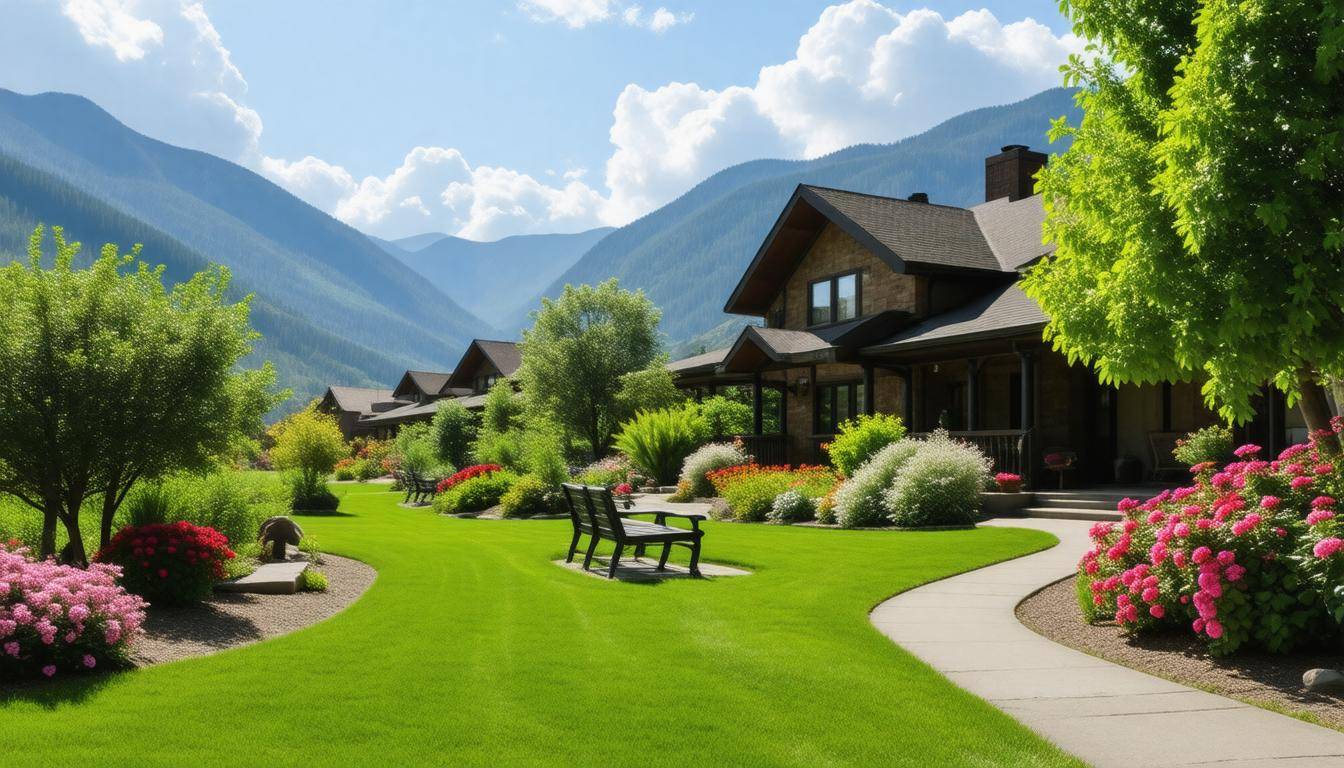
When considering a retirement home, it's essential to look beyond the physical facilities; the community atmosphere and quality of care play critical roles in an enjoyable living experience. Finding the right place can significantly impact your lifestyle post-retirement.
A standout option is Sunrise at Holladay. Nestled in a scenic area, it is celebrated for its inviting environment and comprehensive care services. Residents frequently express appreciation for the friendly and attentive staff. Imagine waking up each day in a beautifully maintained facility where meals and activities are tailored for resident satisfaction.
[QUOTE] “Living at Sunrise at Holladay has revived my spirit. The staff care deeply for each resident, and the recreational activities keep me engaged.” – Mary, 72, Resident.
Another fantastic choice is Legacy Retirement Residence, which attracts those desiring a touch of luxury in their golden years. Here, residents enjoy upscale amenities such as a spa, salon, and gourmet dining options—all designed to enhance day-to-day life. The experience often resembles that of a luxury resort rather than a traditional retirement home. Picture yourself enjoying relaxation services or savoring chef-prepared meals that go beyond basic dishes; it's about truly indulging in life's greatest pleasures.
However, luxury isn't the only route to satisfaction; sometimes, affordability combined with quality can be equally rewarding.
Enter The Ridge Cottonwood, which finds a sweet spot between modern conveniences and outdoor experiences while maintaining a strong sense of community. Residents often highlight the engaging social activities provided by staff who truly form bonds with them. It's like having an extended family right in your neighborhood, where meaningful interactions flourish amid shared interests and vibrant community events.
In considering these options, remember that each facility has its unique charm and focus on different aspects of retirement living. Selecting a retirement home is more than just finding a place—it's about fostering an environment that resonates personally with you.
As we move forward, we will examine how different price points can affect your options and opportunities within retirement living arrangements.
When it comes to choosing the right retirement home, understanding what you get for your money is crucial. Affordable options, like Rosewood Assisted Care, typically focus on offering essential living services tailored for seniors on a budget. They provide comfortable and clean living spaces but may sacrifice some conveniences like private rooms or luxury finishes. These homes often cater to retirees who rely on fixed incomes such as Social Security, making the experience practical yet sometimes limited in terms of social activities.
Though basic, many affordable homes manage to build a supportive community where camaraderie thrives, which can be just as rewarding as high-end amenities.
On the other hand, luxury options like The Stratford at Draper provide an entirely different lifestyle. Residents can expect high-end amenities that transform daily living into a sumptuous experience. With private suites, gourmet dining, and facilities like swimming pools and spas, luxury retirement homes prioritize comfort and elegance. Additionally, they usually offer a higher staff-to-resident ratio, ensuring personalized care that encompasses both emotional support and physical needs.
This distinction can significantly influence your quality of life after retirement. For example:
| Feature | Affordable Options | Luxury Options |
|---|---|---|
| Room Type | Shared/Private | Private Suites |
| Amenities | Basic | Spa, Pool, Salon, Concierge |
| Meal Options | Standard | Gourmet Dining |
| Activities | Scheduled, Basic | Diverse, Specialized |
| Cost | $2,000-$3,500/month | $5,000-$10,000+/month |
As illustrated in the table above, costs vary significantly, reflecting not only the type of accommodation but also the level of service provided. This is where personal preferences come into play: Do you value privacy and gourmet meals over shared accommodations? Are recreational activities an important part of your day-to-day life?
Understanding these disparities helps in deciding how to align your financial situation with your lifestyle desires while also considering the available options for support and care suited to your specific needs.
Comprehensive care extends beyond basic assistance, encompassing medical care, emotional support, and advanced health services designed to meet the diverse needs of older adults. In a world where seniors deserve dignity and respect, this holistic approach creates an environment that fosters well-being.
When it comes to health, having adequate medical support is non-negotiable. In Utah, laws mandate that licensed medical professionals must offer services within certified retirement homes. This ensures residents are not just housed but cared for by qualified individuals. Did you know that approximately 85% of top-rated retirement communities in Utah employ on-site nurses? However, it's noteworthy that only about 50% offer physical therapy—a vital service for seniors aiming to maintain mobility and independence.
Investing in facilities that provide such essential health services can significantly impact overall well-being. Regular check-ins by nurses can catch potential health issues early, preventing minor concerns from developing into serious conditions.
The importance of emotional health cannot be overstated. Many retirement homes, such as Stonehenge of South Jordan, go above and beyond to offer counseling services and mental health support. Regular assessments help caregivers identify residents who might be struggling with feelings of depression or anxiety—a common issue as individuals adjust to new living situations.
“My father’s move to Stonehenge was life-changing. The attention to his mental well-being was something we didn’t realize he needed until he got it,” shares John, the son of a resident. This highlights how tailored emotional support can make a dramatic difference in a senior's quality of life.
Considering these comprehensive services, it's essential to recognize the role that socialization plays in enhancing the living experience for residents. Engaging activities and creating connections within the community can reshape their daily lives.
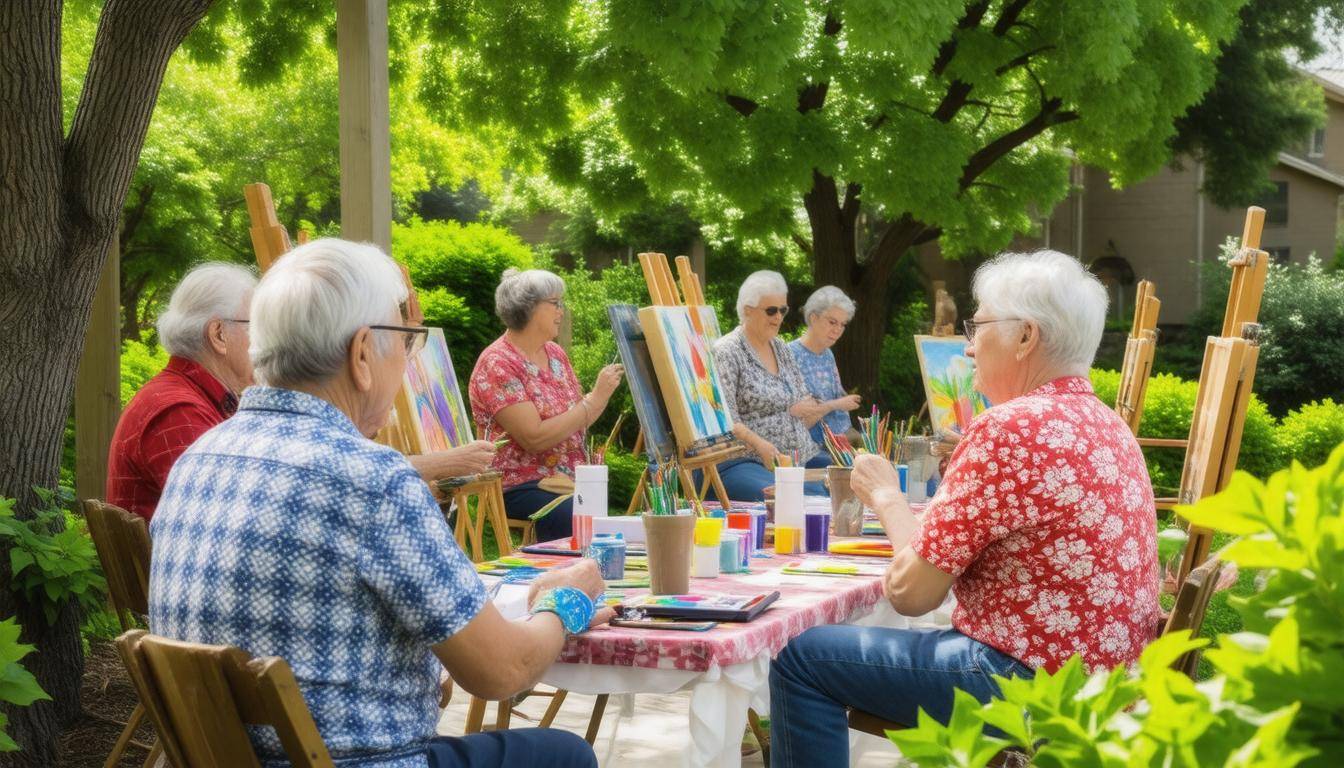
In retirement settings, the importance of maintaining active social lives cannot be overstated. Engaging in a variety of activities helps foster relationships among residents, combats feelings of isolation, and supports mental well-being. From the moment one steps into a community like The Coventry at Cottonwood Heights, the buzzing energy of different groups engaging in activities is palpable; it’s a positive reminder that life can be both fulfilling and enjoyable at any age.
Recreational Activities: These include fitness classes designed for all levels—think gentle yoga or low-impact aerobics—as well as organized golf outings that allow participants to enjoy Utah's scenic landscapes. Swimming sessions, often held in community pools, offer an excellent way for seniors to stay active without stressing their joints.
Creative Classes: Many seniors find joy and self-expression through creative outlets. Art workshops encourage artistic exploration, whether through painting or pottery. For those interested in crafts, knitting clubs provide a relaxed environment to socialize while creating something beautiful. Additionally, music lessons can spark new passions and provide cognitive stimulation.
Social Events: To nurture connections among residents, retirement communities often organize various social events. Picture lively dances with local bands playing classic tunes or nights dedicated to watching beloved movies together, complete with popcorn and good company. Communal dining experiences create another layer of interaction, allowing residents to share stories over meals and cultivate friendships.
Educational Programs: Lifelong learning keeps minds sharp and engaged. Educational opportunities such as guest lectures introduce new ideas and encourage stimulating discussions among peers. Book clubs not only ignite literary passions but also serve as a platform for sharing perspectives on chosen readings. Moreover, travel opportunities allow adventurous residents to explore beyond their community walls together.
Taking advantage of these diverse offerings is key to establishing a balanced lifestyle in retirement homes. It's not purely about socializing; it’s about cultivating purpose and maintaining mental acuity—both of which contribute significantly to an enriched retirement experience.
Transitioning from these enriching activities, it's essential to evaluate how finances play a role in the overall retirement experience for potential residents.
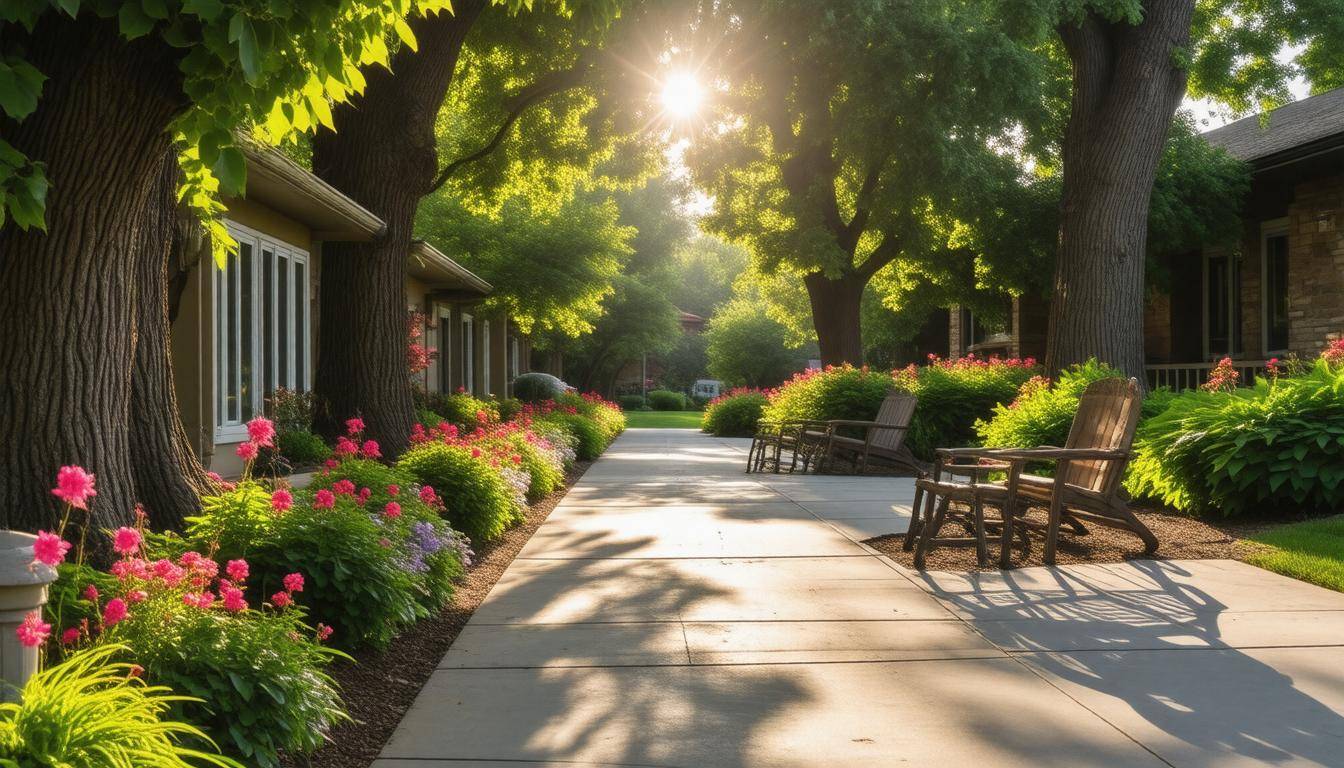
The financial aspect of choosing a retirement home often balances cost against perceived value. While it may be tempting to opt for the least expensive option, price alone does not paint the full picture.
It’s essential to thoroughly examine what is included in the monthly fees, as these can vary significantly from one community to another. Typically, higher costs cover more comprehensive services—such as advanced medical care, specialized staff training, and luxury amenities—that can greatly enhance quality of life.
Think about what your loved ones will need in their later years. For instance, if they have specific medical needs or mobility challenges, those additional services are invaluable.
Some facilities offer wellness programs, fitness classes tailored to seniors, and even social events that encourage engagement and interaction. These aspects contribute to a healthier, happier lifestyle and help maintain both physical and mental well-being.
In fact, one resident remarked, “When my father moved into his new place, he found friends again and looked forward to daily activities—something he hadn’t experienced in years.” Investing in a facility that offers such enriching experiences can lead to a higher quality of life that outweighs the initial sticker shock.
| Type | Monthly Cost Range |
|---|---|
| Independent Living | $1,500 - $3,500 |
| Assisted Living | $3,000 - $5,000 |
| Memory Care | $4,000 - $7,000 |
| Skilled Nursing Facilities | $6,000 - $8,500 |
The costs associated with various types of retirement homes in Utah can fluctuate based on several factors: location within the state, specific services offered—and sometimes even the time of year.
For instance, assisted living options may seem more expensive initially but include meal plans and round-the-clock monitoring that could save money in other areas like groceries and healthcare.
"We decided to go with an assisted living facility that was a bit pricier," shared Sarah, daughter of a resident. "But the extra costs meant better medical care and amenities for my mother."
Particularly for families considering long-term care decisions, keeping an eye on not only immediate costs but also potential out-of-pocket expenses down the road becomes paramount. This information can shape decisions effectively and ensure financial stability alongside peace of mind.
Having a comprehensive view of the costs will significantly inform your retirement planning process. Let’s now transition into essential strategies for navigating this journey effectively.
Proper planning ensures a smoother transition to retirement living, helping you secure not just a roof over your head but also a lifestyle that feels right. The first step often begins with a financial assessment. This might sound daunting, but it’s truly about taking stock of what you have.
Begin by evaluating your savings, pensions, and other financial resources as these will lay the groundwork for your retirement choices. Consider creating a detailed budget that addresses all potential expenses—from healthcare to leisure activities—so that you know what you can afford.
After laying this financial foundation, it’s time to gather options that resonate with both your needs and desires.
Next comes the exciting part: researching options. Resources like Utah Seniors provide valuable insights into various retirement homes available across Utah. As you explore, consider factors such as location, community atmosphere, and available amenities—these elements significantly impact your quality of life.
With research done, it's crucial to take tangible steps towards finding your perfect fit.
Visiting homes should be an essential component of your planning process. Schedule tours at potential facilities and don’t hesitate to ask questions about daily activities, staff-to-resident ratios, and the overall environment. Picture yourself living in each facility; visualizing your daily routine there can help clarify whether a particular option embodies your idea of retirement paradise.
Compiling insights from your visits leads directly to the next important consideration.
It's wise to consider future needs as well when selecting a retirement home. Think ahead about how your health and lifestyle requirements might evolve over time. Opt for facilities that offer varying levels of care so you won't have to relocate later due to increased medical needs; this foresight will keep your transition seamless and stress-free.
Another smart move is consulting with a financial advisor who specializes in retirement planning. They can offer additional insights specific to your goals, assuring you that your finances will adequately support the lifestyle you envision—a resource invaluable for ensuring peace of mind during these changes.
Don’t forget to visit Utah Seniors for more detailed comparisons and resources designed to help you craft the perfect retirement plan tailored just for you in Utah.
As you embark on this journey towards finding the right retirement home in Utah, remember that thorough planning will lead you not only to an appropriate living situation but also to a fulfilling lifestyle in your golden years.
Finding the right memory care facility for a loved one can feel overwhelming, especially when faced with the many options and varying levels of care available. It’s not just about selecting a place to live; it’s about ensuring that they feel safe, respected, and supported as they navigate the challenges of Alzheimer's or other forms of dementia. In Salt Lake City, families have access to several top-notch facilities with unique services tailored to create an environment of warmth and engagement. Whether you're looking for a vibrant community atmosphere or specialized memory programs, this guide will help you explore some of the best memory care options available in the area, making your search easier and more informed. Let's dive into what these facilities offer and how they can enhance quality of life for seniors dealing with memory loss.
Salt Lake City offers a variety of memory care facilities that provide specialized support for individuals with Alzheimer's disease and other forms of dementia. These facilities typically feature secure environments, trained staff, engaging activities, and personalized care plans to ensure residents receive the support they need while maintaining a high quality of life.
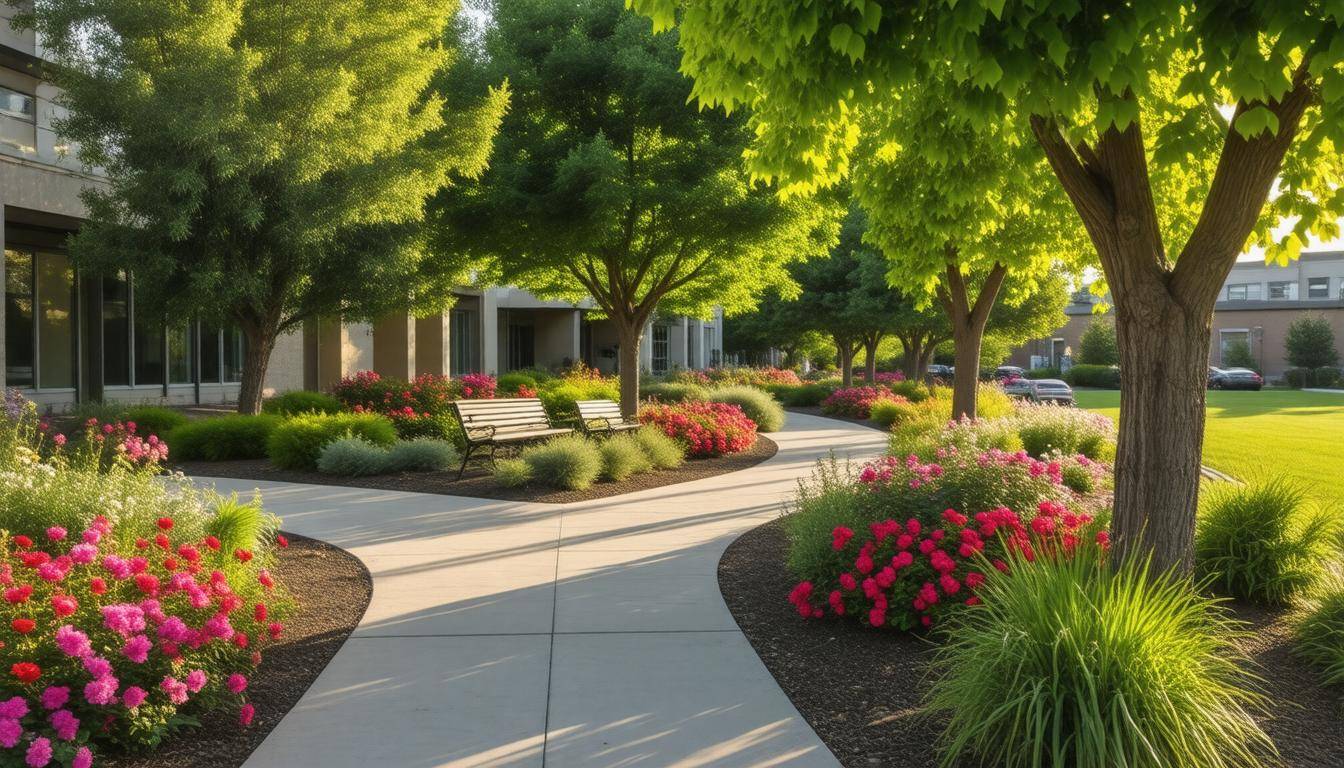
The first facility to consider is The Terrace at Mountain Creek, renowned for its luxurious and welcoming ambiance. As you step inside, there's a sense of warmth and comfort that invites both residents and visitors alike. The facility prides itself on having a notably high staff-to-resident ratio, meaning every individual receives specialized attention tailored to their unique needs. This approach not only helps residents feel valued but also allows for personalized care plans that evolve with each person's journey through memory loss.
Moving on, we find Sunrise of Holladay, which has established a reputation as a leader in memory care through its innovative Reminiscence Neighborhoods. These neighborhoods are designed specifically for individuals with memory challenges, featuring secure environments and intuitive floor plans. Such layouts minimize confusion and promote independence while maintaining safety. One resident's family member, Mary Jenkins, shared that her mother is treated like family here, emphasizing the strong bonds formed between staff and residents. This sense of community is invaluable for those facing the challenges of dementia.
Another noteworthy option is Beehive Homes of Salt Lake City. This facility takes pride in offering a smaller, more intimate atmosphere, which many families find comforting. Staff members get to know each resident personally, allowing them to create individualized care plans focused on the needs and preferences of each resident. With round-the-clock support and enriching activities designed to stimulate cognitive function, Beehive Homes blends professional care with a sense of belonging that is essential for mental well-being.
Lastly, we cannot overlook The Wentworth at East Millcreek, where innovation meets compassionate care. Rated highly by families, this facility doesn’t just stop at traditional methods; it incorporates music therapy and art therapy into its memory care regimen. These therapies have proven to be effective tools in engaging residents and enhancing their quality of life by tapping into their memories and emotions tied to music and art.
Understanding the distinct features and services available can significantly aid in finding the right fit for loved ones, ensuring they receive the best possible care tailored to their needs. Turning our attention now to explore the various offerings that enhance daily living in these remarkable facilities.
Memory care facilities provide an essential support system designed specifically for seniors grappling with conditions like Alzheimer’s or other forms of dementia. One standout feature is the commitment to comprehensive medical and health services. Most establishments ensure 24-hour supervision, allowing residents to feel secure at all hours.
Medication management is another important aspect; staff are trained meticulously to administer medications as prescribed while maintaining a careful record of any side effects. This structured oversight can lead to better health outcomes, as demonstrated by providers like Sunrise of Holladay, which schedules regular visits from a neurologist every few weeks to address residents' specific medical needs.
Transitioning into personal care services, the focus shifts to the individual dignity and comfort of each resident. Facilities recognize that tasks such as bathing, dressing, and grooming can become challenging for those with cognitive impairments.
For instance, at Beehive Homes of Salt Lake City, there’s a dedicated team whose sole purpose is to ensure that residents receive assistance tailored to their personal needs. This team plays an instrumental role not just in promoting hygiene but also reinforcing self-esteem among residents by ensuring they look and feel their best each day.
Moving forward, therapeutic activities emerge as another cornerstone of care within these facilities. Engaging seniors through carefully curated programs fosters both mental stimulation and social connections vital for overall well-being. These programs can range from simple cognitive stimulation exercises to more dynamic activities designed to cater directly to the interests of residents.
The Terrace at Mountain Creek stands out in this regard by offering specialized sessions focused on memory development alongside traditional physical therapy.
It's clear that quality services hinge significantly on the expertise and dedication of caregivers and staff, making staffing a critical consideration when selecting a memory care facility. With this in mind, we now turn our attention to the professionals who make these supportive environments possible.
The heart of any memory care facility lies in its dedicated professional caregivers. These are not just employees; they are the lifeblood that nurtures and maintains the emotional and physical well-being of residents. Compassionate, trained individuals understand that providing care for seniors with memory impairments requires a unique approach. It’s more than just assistance; it’s about creating a nurturing environment where residents feel safe and respected.
Rigorous training programs are fundamental in preparing staff for the challenges that come with memory care. Facilities like The Wentworth at East Millcreek prioritize ongoing education to keep their teams current on best practices in dementia care and geriatric psychology. They require staff members to complete specific certifications that equip them with the tools necessary to handle everything from behavioral challenges to effective communication strategies. This investment in training enhances caregiver capabilities and enriches the lives of residents.
Consider this: when staff are continuously educated about evolving methodologies in memory care, they can better engage with residents, catering to their specific needs and preferences. In turn, this leads to improved satisfaction for both residents and their families.
An equally important metric for evaluating the quality of a memory care facility is the staff-to-resident ratio. A lower ratio often translates into more personalized attention and quicker response times for those in need. For instance, Beehive Homes proudly maintains a 1 staff member for every 5 residents, ensuring that each resident receives ample interaction and supervision throughout the day. This low ratio fosters a sense of security among residents because caregivers can monitor them closely, tailoring their approach according to individual needs.
When caregivers have enough time to dedicate to each resident, it promotes trust and encourages residents to feel comfortable expressing their wants or concerns. This connection not only enhances safety but directly supports mental well-being through meaningful social interactions.
The relationships built between caregivers and residents significantly impact overall well-being and how individuals experience life within these facilities. As one family member at Sunrise of Holladay remarked, “The caregivers form genuine bonds with the residents. They know each resident by name and understand their personal needs and preferences.” This sentiment echoes through many testimonials from families who appreciate seeing their loved ones treated as individuals rather than just numbers or cases.
When caregivers take the time to learn about residents' histories, interests, and favorite activities, they can facilitate enriching experiences every day. Through personal engagement, caregivers foster comfort and spark moments of joy that enhance quality of life.
Exploring ways to actively involve residents through engaging initiatives can further elevate their daily experiences within these facilities.
Activities designed for seniors with memory impairments serve not only to enrich their daily lives but also help enhance cognitive function, emotional health, and social connections. At facilities like The Terrace at Mountain Creek and Wentworth at East Millcreek, the focus on personalized experiences is paramount. Here, thoughtful planning maximizes each resident's potential while catering to individual preferences and needs.
Cognitive stimulation is an essential component of memory care programs. Research indicates that engaging in activities such as puzzle solving, memory games, and problem-solving tasks can boost mental agility. For example, both facilities incorporate popular games like bingo and trivia into their programming. Not only do these activities encourage friendly competition, but they also stimulate memory recall in a fun and interactive way. Residents often share laughter and stories during these sessions, further reinforcing their cognitive strengths.
Adequate physical activity is equally crucial for maintaining both physical and mental health in seniors.
Incorporating adapted exercise regimens approaches fitness holistically; it’s about more than just movement—it's about enhancing quality of life. Gentle yoga sessions promote balance, flexibility, and relaxation, helping reduce anxiety which many residents might experience. Similarly, daily morning walks stimulate physical activity while providing opportunities for social interaction among residents. These simple yet impactful routines are designed around individual capabilities, ensuring that everyone can participate at their own pace.
The importance of social interaction cannot be overstated. Studies show that maintaining social connections can significantly slow cognitive decline among seniors. Structured activities such as group storytelling or shared mealtimes foster a robust sense of community within memory care facilities. Family days allow loved ones to become active participants in the residents' lives, providing vital support and engagement. Creating environments where residents feel comfortable sharing memories and experiences nurtures emotional connections that bolster both happiness and resilience.
The success of these specialized activities highlights the need for a nurturing atmosphere that further promotes well-being. As we look closer at ways to enhance this environment...
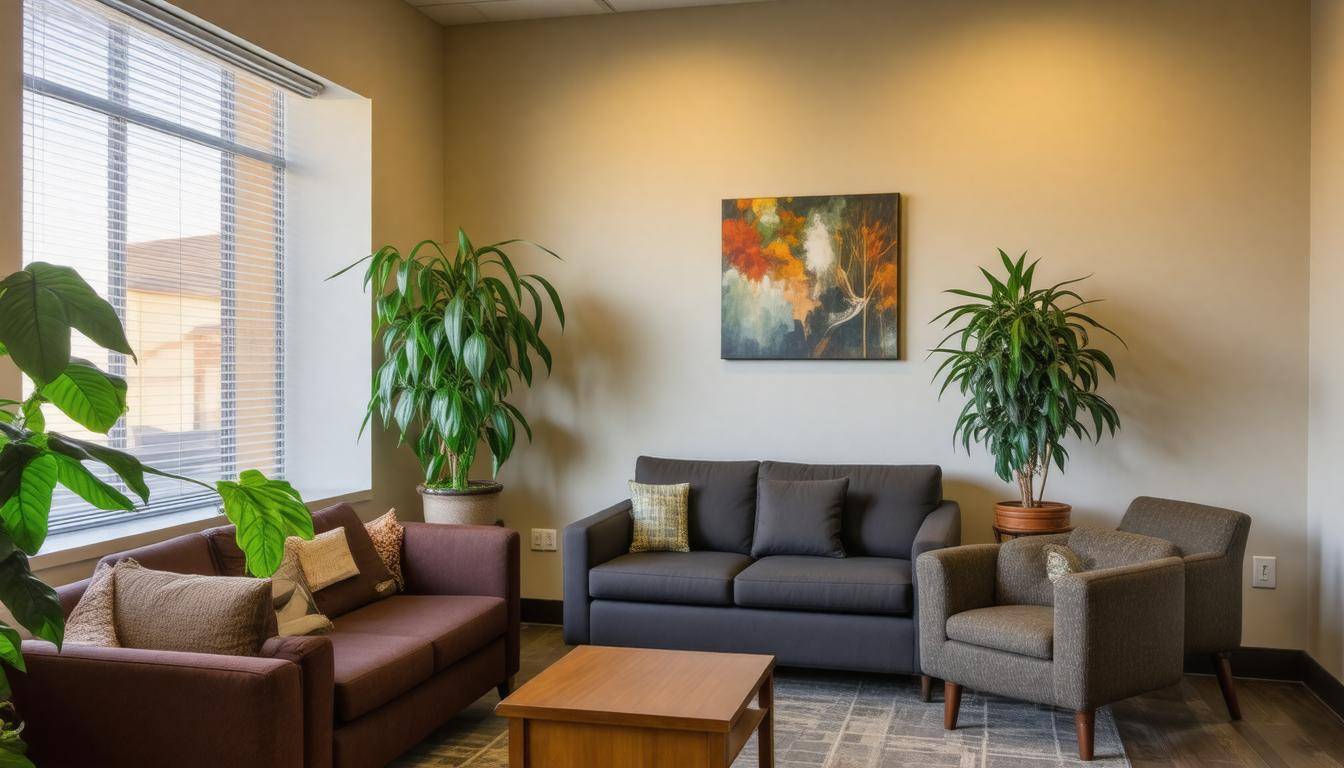
The environment in memory care facilities is not just about the physical layout; it encompasses a holistic approach to fostering well-being among residents. Individualized attention to what makes each senior comfortable and secure can lead to meaningful improvements in their daily lives.
Essential elements must work harmoniously together, where safety, familiarity, and sensorial stimulus create an atmosphere that feels inviting, much like home.
Safety is paramount in any memory care facility. Facilities should incorporate secure entry and exit points, often monitored by staff or advanced surveillance systems to ensure residents are safe.
For instance, facilities like Sunrise of Holladay maintain controlled access areas that prevent wandering—an all too common behavior among those experiencing memory loss. This design not only reduces the risk of residents becoming lost but also eases families' concerns about their loved ones’ well-being. Knowing that security measures are in place fosters peace of mind for both residents and their families.
Beyond safety, creating a homelike atmosphere plays a vital role. Imagine stepping into an environment filled with warm colors, approachable furniture, and familiar decorations; it evokes reassurance and comfort.
Families often share experiences that highlight this point. For instance, Sarah, whose father resides at Beehive Homes, remarks, "When we visit my dad, it feels like visiting him at his own home." This sentiment reflects the effect of thoughtful interior design with cozy living spaces that promote relaxation and make residents feel valued.
In addition, sensory environments can significantly enhance the quality of life for memory care residents. Engaging multiple senses through visual elements, textures, fragrances, and sounds can invoke emotions and spark memories—key components in cognitive health.
Facilities like Wentworth at East Millcreek are pioneering this concept by offering sensory rooms designed specifically to provide calming stimuli along with opportunities for engagement. Such environments may include pet therapy rooms or sensory gardens filled with different textures and colors enhancing interactions.
By prioritizing these aspects—safety, homeliness, and sensory engagement—the experience for residents transforms dramatically. As we consider these elements further, let's explore how you can identify the best option for your loved one.
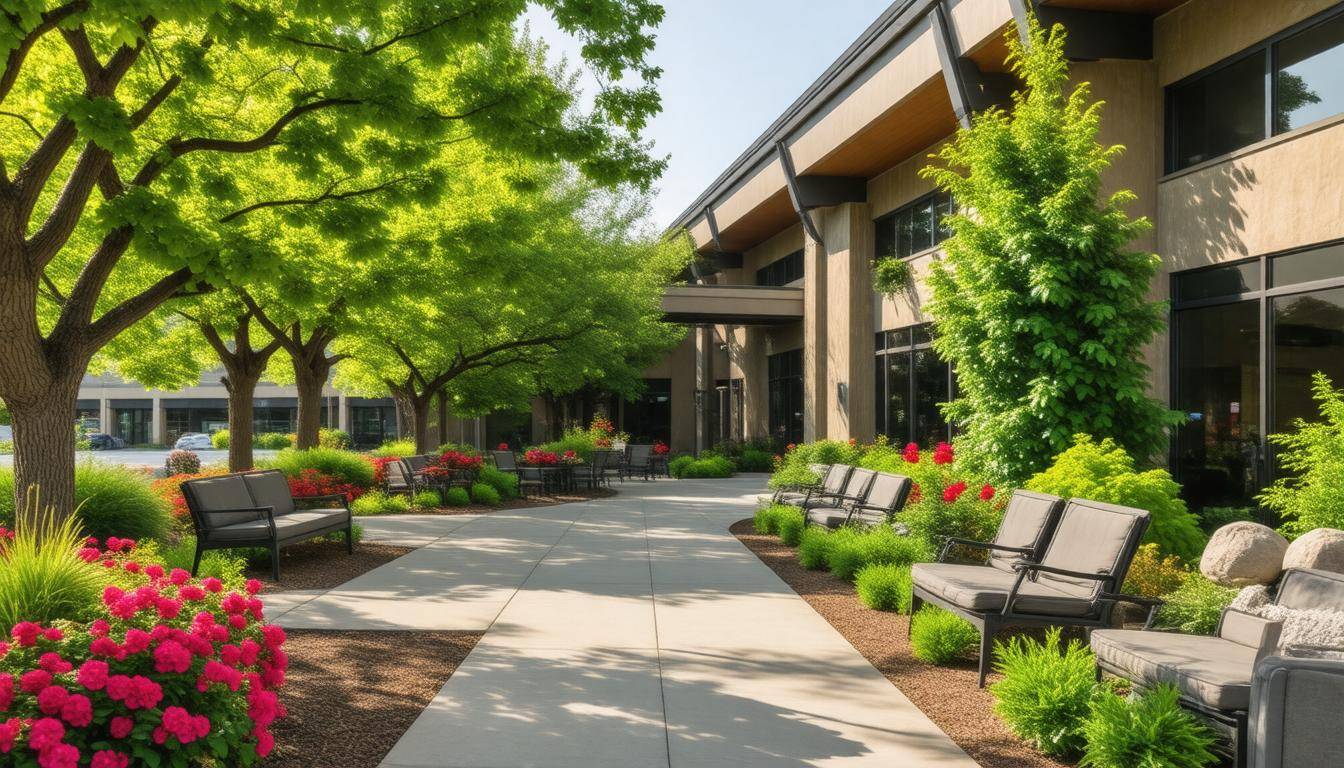
Choosing a memory care facility in Salt Lake City isn't just about picking a place; it's about finding a new home that meets your loved one's unique needs. Start by assessing their specific requirements, considering their cognitive condition and medical necessities. This thoughtful evaluation will guide your search, ensuring you find a facility equipped to provide the necessary level of care.
If your loved one has a passion for gardening or enjoys fresh air, facilities with secure outdoor spaces can enhance their daily experience, allowing them to thrive in an engaging environment.
Once you identify potential facilities, it’s crucial to visit them in person, as first impressions reveal much about the care environment.
During your visits, take note of cleanliness and overall ambiance. Cleanliness reflects how well the facility is maintained and impacts both the health and comfort of residents. Observe staff interactions; they can indicate the quality of care your loved one will receive.
Are the staff attentive? Do they engage warmly with residents? These factors greatly shape your loved one's experience. Don't hesitate to ask questions: How do staff handle emergencies? What engagement activities are available? A facility should be transparent and welcoming when addressing your inquiries.
After exploring options and speaking with staff, consider a significant factor: cost.
Memory care expenses can vary widely across facilities in Salt Lake City. On average, families might expect to pay anywhere from $3,500 to $7,000 per month depending on included services. Understanding what is covered within these costs is essential before making a decision. Request detailed information regarding additional fees for services that may not initially be covered under the monthly rate.
Here’s a breakdown of costs at some popular facilities:
| Facility Name | Monthly Cost | Inclusions |
|---|---|---|
| The Terrace at Mountain Creek | $6,500 | Full care, daily activities, meals |
| Sunrise of Holladay | $5,000 | Care services, therapeutic activities |
| Beehive Homes | $4,200 | Full care, individualized activities |
| The Wentworth at East Millcreek | $5,500 | Full care, specialized therapies |
By taking these factors into account and crafting a checklist during your search process, you can confidently select a memory care facility that enriches your loved one's quality of life while providing essential support.
As you embark on this journey to find a suitable memory care facility in Salt Lake City, remember that thorough research and compassion will ultimately lead you to the best choice for your family member's needs.
Navigating the world of senior living can often feel overwhelming, especially with all the options and information out there. If you’re searching for the best resources to support yourself or a loved one during this stage in life, you're not alone. Many families are faced with these same challenges and questions every day. That’s why the Seniors Blue Book Utah stands out as a beacon of hope and guidance, filled with crucial details on services, support systems, and community resources just waiting to be discovered. Throughout this article, we’ll explore how this valuable resource, along with supplemental tools like UtahSeniors.org, can empower seniors and their families to make informed choices that truly enhance quality of life. Whether it’s finding the right healthcare provider or locating engaging recreational activities, the journey toward a fulfilling senior experience starts here.
The Seniors Blue Book for Utah is a comprehensive directory that provides essential information on services, resources, and support available to seniors in the state. It includes listings of healthcare providers, housing options, recreational activities, and community resources tailored specifically for the aging population in Utah.

The Seniors Blue Book Utah is an essential reference guide designed to streamline the lives of seniors living in Utah. It provides crucial information and resources, encompassing everything from healthcare options to residential facilities, making it an invaluable tool for elderly individuals and their families during this life stage.
Imagine it as a personalized directory packed with insights and guidance tailored to meet the unique needs of seniors. Throughout its pages, the Blue Book addresses various aspects of senior life, featuring sections on community services catering directly to their well-being. A standout feature includes contact information for assisted living facilities, allowing families to make informed choices about caregiving options.
Additionally, it offers practical tips for those wishing to age in place—adapting their homes to fit changing needs without sacrificing comfort and familiarity.
Key areas of focus also include directories of physicians who specialize in geriatric care. This ensures that seniors can find healthcare providers who understand the intricacies associated with aging healthily. Moreover, educational articles on navigating Medicare highlight how seniors can take full advantage of available benefits, significantly lightening their financial burdens.
While the Seniors Blue Book provides foundational information, it's essential to complement it with up-to-date data tailored specifically for local communities. That’s where UtahSeniors.org becomes an incredibly rich resource. Our website features real-time updates and added functionalities that are indispensable for anyone seeking support or resources for older adults.
For instance, visitors can tap into our event calendar highlighting local activities specifically geared toward seniors, helping them stay socially active and engaged within their neighborhoods. Additionally, our continuously updated directories ensure access to current contacts for healthcare services, social programs, and other vital community resources. The interactive tools available on our site allow users to personalize their search based on individual needs or geographic location.
With a strong grasp of the comprehensive resources available through both the Seniors Blue Book and UtahSeniors.org, we can now pivot to examine the various living arrangements and communal possibilities that enhance the quality of life for older adults.
One of the first steps to ensuring a comfortable and fulfilling senior life is understanding the range of residential options available. Community living has become a favored choice among seniors, offering not just a home but a lifestyle filled with social interaction and support systems. The Seniors Blue Book breaks down various housing arrangements to suit differing needs, from vibrant independent living communities that foster activity and connection to more specialized care environments like nursing homes or memory care units tailored for those with specific health challenges.
This variety helps build a sense of belonging, allowing individuals to select places that resonate with their lifestyle preferences.
For instance, Silverado Memory Care facilities stand out due to their dedicated approach towards residents with memory-related issues. They are designed not only for comfort but also emphasize substantial daily engagement through activities aimed at sparking joy and memories in residents. Understanding this spectrum of options helps seniors and their families make choices that align with their individual situations.
Recent research indicates that around 70% of Utah seniors prefer community living setups emphasizing social engagement and security. This strong desire among older adults highlights the importance of environments that encourage friendships and participation in communal events, turning neighbors into a second family.
When selecting the right residential setting, it's crucial not to overlook key decision-making criteria. As highlighted in the Blue Book, proximity to family can greatly influence happiness—not only does it facilitate visits but it also fosters greater peace of mind for both seniors and their loved ones.
Additionally, assessing the level of care required is essential; some may need only basic assistance while others might require round-the-clock medical attention. Alongside these considerations lies the aspect of affordability. Financial constraints often guide decisions about where to live, making budget-friendly options paramount for many seniors on fixed incomes.
Thankfully, resources such as UtahSeniors.org offer significant tools to aid in your decision-making process. Users can access reviews from other residents—which can provide valuable insights—and take virtual tours of facilities before ever stepping foot inside them. This feature offers peace of mind as prospective residents can envision themselves in their new environment without any pressure.
Now, let's explore the critical elements surrounding health management, which contribute immensely to enjoying quality living during the later years.
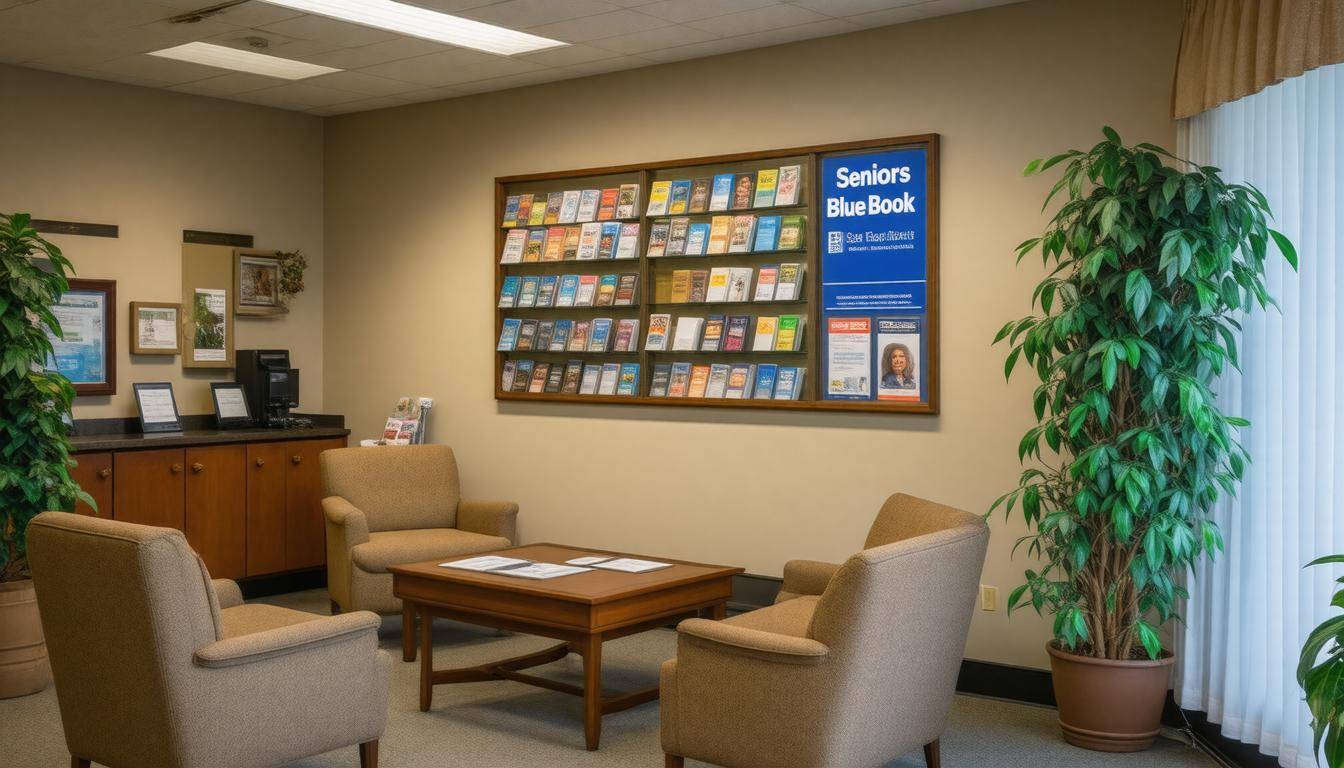
Accessing adequate healthcare is critical for seniors, yet it often comes with a complex web of choices and providers. Understanding the variety of services available—from routine check-ups to specialized care—is key in ensuring that the golden years can truly be enjoyable and active. The Seniors Blue Book serves as a guiding light, detailing an impressive array of options such as hospitals dedicated to geriatric care, general practitioners who specialize in aging populations, and diverse rehabilitation services like physical therapy that can bring back function lost due to injury or illness.
But it doesn't stop there—offering more than just basic information, this resource also highlights important facilities like Intermountain Medical Center, showcasing their robust geriatric programs aimed specifically at older adults. These tailored programs recognize the unique health challenges faced by seniors as they age and offer solutions that resonate with their needs.
Breaking it down further, we see that apart from traditional medical offerings, the Blue Book casts a wide net over specialized services that are invaluable for seniors. For instance, home health aides provide not only medical assistance but also companionship, which can significantly improve emotional well-being. Imagine recovering from surgery without the added stress of navigating daily tasks—home health aides fill that gap beautifully.
In addition, palliative care emerges as another critical service aimed not just at treatment but at enhancing comfort during challenging health situations. It combines medical care with emotional and spiritual support, focusing on quality rather than solely on quantity of life.
Another rising star in the realm of healthcare support is telemedicine. This modern approach allows seniors to consult healthcare professionals from the comfort of their homes—a solution particularly beneficial during times when mobility may be limited or when long wait times for appointments pose barriers. This convenience makes healthcare not just accessible but genuinely user-friendly.
To navigate this rich landscape of options seamlessly, UtahSeniors.org enhances what the Blue Book provides by offering real-time updates and reviews on local healthcare providers. Imagine being able to read up-to-the-minute feedback from fellow seniors about their experiences with various medical practices. This tool empowers seniors to make informed choices about who they trust with their care.
Having examined the breadth of healthcare resources available for older adults, it's essential to consider how innovative tools can further assist in navigating these options effectively.

In our digital landscape, having the right tools at your fingertips can transform your experience. The Blue Book takes advantage of technology to provide interactive directories that streamline access to vital senior services. Imagine needing medical assistance or a community event; instead of flipping through pages, you simply click a button, and voilà! You're connected directly to the information you need. Many seniors have shared how these online directories have drastically improved their ability to find support services quickly and efficiently.
For example, the interactive map feature allows users to select healthcare providers not only by location but also based on specific needs—whether it's proximity to home or particular specialties. Local recreational facilities designed for seniors can be located with ease, promoting an active lifestyle and social engagement. This kind of accessibility positively impacts quality of life.
Considering various needs, some invaluable tools available include:
Facility Locator: This feature helps users quickly identify nearby assisted living and healthcare facilities in their area, saving valuable time when urgency strikes.
Cost Calculator: It aids in budgeting and planning finances related to senior care, empowering individuals to make informed decisions without unnecessary financial stress.
Event Calendar: This tool prompts users about upcoming community events and health seminars, ensuring they stay connected with local happenings and engage in enriching activities.
Additionally, platforms like UtahSeniors.org further enhance these directories by providing updates in real time. There's nothing worse than relying on outdated information, which can lead to frustration or missed opportunities for essential services. By integrating up-to-the-minute updates into the existing resources, seniors can rely on accurate and relevant data every time they search.
Each of these tools serves a dual function: simplifying access to crucial information while promoting independence among seniors. They can feel empowered knowing they can effectively manage their healthcare choices and stay connected within their communities without being overwhelmed by hurdles typically associated with navigating various services.
As we continue exploring valuable resources tailored for seniors, let's consider how personalized consultations can address individual needs more closely.
Navigating the complexities of senior care can feel daunting, especially when it comes to understanding the myriad options available. That's where personalized consultation services come into play, offering invaluable support tailored specifically to the unique needs of seniors and their families.
The Blue Book has set a remarkable standard by providing features like consultation hotlines and personalized service reviews that guide individuals toward informed choices regarding various care options.
One noteworthy aspect of these services is the availability of on-site visits. By arranging home consultations, trained professionals can assess the living environment and better understand the particular health or mobility challenges that an individual may be facing. This firsthand evaluation yields insights that are often overlooked in generic assessments or online searches.
Each visit serves as an opportunity to examine specific needs, whether it's accessibility modifications or specialized care requirements, ensuring every detail is addressed thoughtfully and thoroughly.
Of course, many families have shared their relief after utilizing such services. For instance, one family recounted how a personalized consultation led them to discover a nursing facility perfectly suited for their elderly father. Prior to this guidance, they felt overwhelmed by the choices, but with focused assistance, they could transition him smoothly while feeling assured of his well-being.
Another pivotal benefit stems from the personalized service reviews provided through the Blue Book. These reviews compile experiences from others who have navigated similar paths, equipping families with valuable insights into each option's pros and cons. This resource doesn’t just list facilities; it captures real stories and outcomes that illuminate what prospective residents can genuinely expect.
To maximize these valuable resources, it's crucial to also follow up with additional reviews found on UtahSeniors.org. While the Blue Book offers a solid starting point, cross-referencing information ensures you possess the most complete and current knowledge available about facilities or services under consideration.
As we explore further, additional tools and support systems await to assist families in making informed senior care decisions together.
Caring for seniors often places a significant emotional and physical toll on the caregivers themselves. Over 40% of caregivers experience substantial stress, underscoring the need for comprehensive support systems. Recognizing this crucial aspect of caregiving, resources designed specifically for families and caregivers are essential in helping them navigate their complex roles.
Through the Seniors Blue Book Utah, caregivers access valuable tools—from educational materials to local networking opportunities—that empower them to better care for their loved ones while maintaining their own well-being.
One of the most meaningful resources provided through the Seniors Blue Book is information about caregiver support groups. These groups offer an invaluable chance for individuals managing similar challenges to connect. Sometimes, simply sharing experiences can lighten burdens. Imagine attending a meeting surrounded by people who understand the delicate balancing act you face—it's like finding a lifeline in turbulent waters. Here, caregivers can discuss coping strategies, share advice on specific issues they encounter, and even establish friendships that last long after the sessions end.
In addition to support groups, utilizing resources such as respite care services can provide much-needed relief from daily pressures. This temporary care option allows caregivers a chance to recharge physically and mentally while knowing their loved one is still receiving quality attention. Think of it as hitting a “reset” button; by taking a break, you return to your role feeling invigorated and more capable of handling the tasks at hand.
Educational seminars available on the Seniors Blue Book platform enhance caregivers' expertise regarding various aspects of senior care. These sessions often cover best practices for dealing with common health concerns faced by seniors or legal matters like understanding power of attorney and elder abuse. By empowering families with knowledge, they are not only better equipped to manage caregiving tasks but can also advocate effectively on behalf of their loved ones.
Beyond formal education and peer support, it's vital for caregivers to explore local community events tailored specifically toward their needs.
So where can you find these connections? Visiting platforms like UtahSeniors.org opens doors to forums where caregivers can engage in discussions that cater specifically to their unique experiences—an essential tool in preventing feelings of isolation. Participating in community events dedicated to caregiver well-being reinforces the understanding that they aren't alone on this journey.
When families grasp the importance of supporting their caregivers, they lay the groundwork for sustainable caring relationships that benefit everyone involved. The resources outlined in the Seniors Blue Book not only ensure that seniors receive optimal care but also safeguard the mental and emotional health of those providing it.
In summary, using tools from the Seniors Blue Book can significantly improve both caregivers’ experiences and the quality of care provided to seniors. Family support is vital for sustaining these healthier relationships.
Copyright © UtahSeniors.com